- Quick start
- Comparing different classifications
- Creating custom classification systems
- Adding tables to existing classifications
- Adding and editing classes and sub-classes
- Import and export of tables in Excel format
- Managing users and their rights
- Update user profile
- Extension for Autodesk® Revit®
- Extension for Autodesk® NavisWorks®
- Extension for TEKLA Structures
- Getting started with the BIMAXON ICS API
The role of classes
This section explains how to add and modify classes and one or more levels of sub-classes in BIMAXON ICS, as well as how the coding of items is handled and how to make new tables visible.
As an introduction, we note that the purpose of classification is to make it possible to clearly identify and distinguish objects in a specific domain by organizing their categories and properties.
Objects are thus grouped into classes and sub-classes based on their properties. A level is a set of (sub-)classes with the same granularity. The properties of classes at a higher level are more general and those at a lower level are more specific.
For a classification to be exhaustive, every object in the domain in question must be assigned to a class, and in order to be distinct, the classes must be mutually exclusive, meaning each object may only belong to one class. Otherwise there may be unclassified objects or objects may belong to more than one class in such a way that they cannot be clearly identified.

To add classes
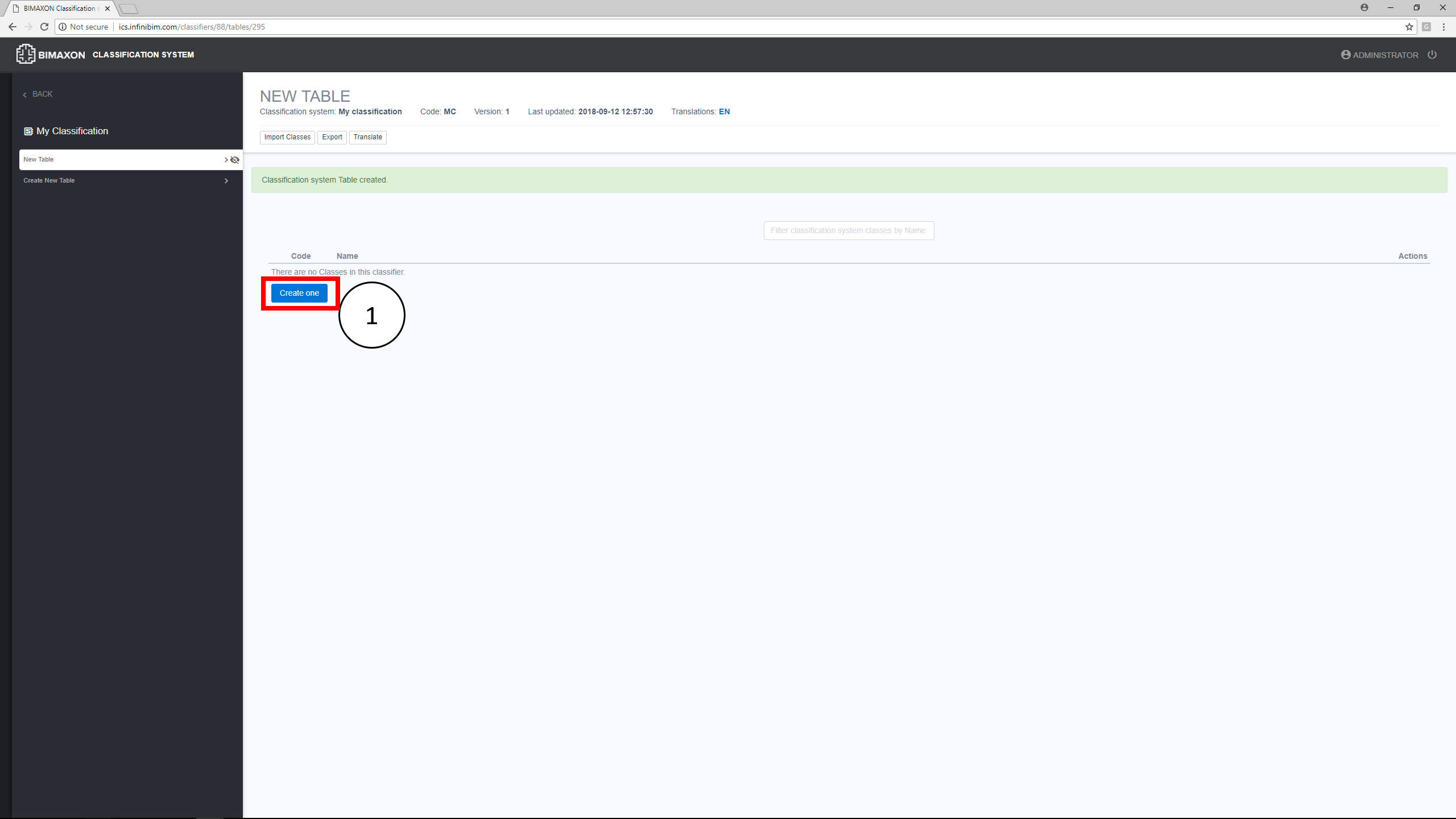
To get started, within the relevant table click the ![]() button.
button.
- Now enter an index value for the class
- Enter a title (name) for the class
- Add ‘synonyms’ (keywords) to aid searching
- Enter a description of the class
- And, finally, save it by clicking on
 .
.
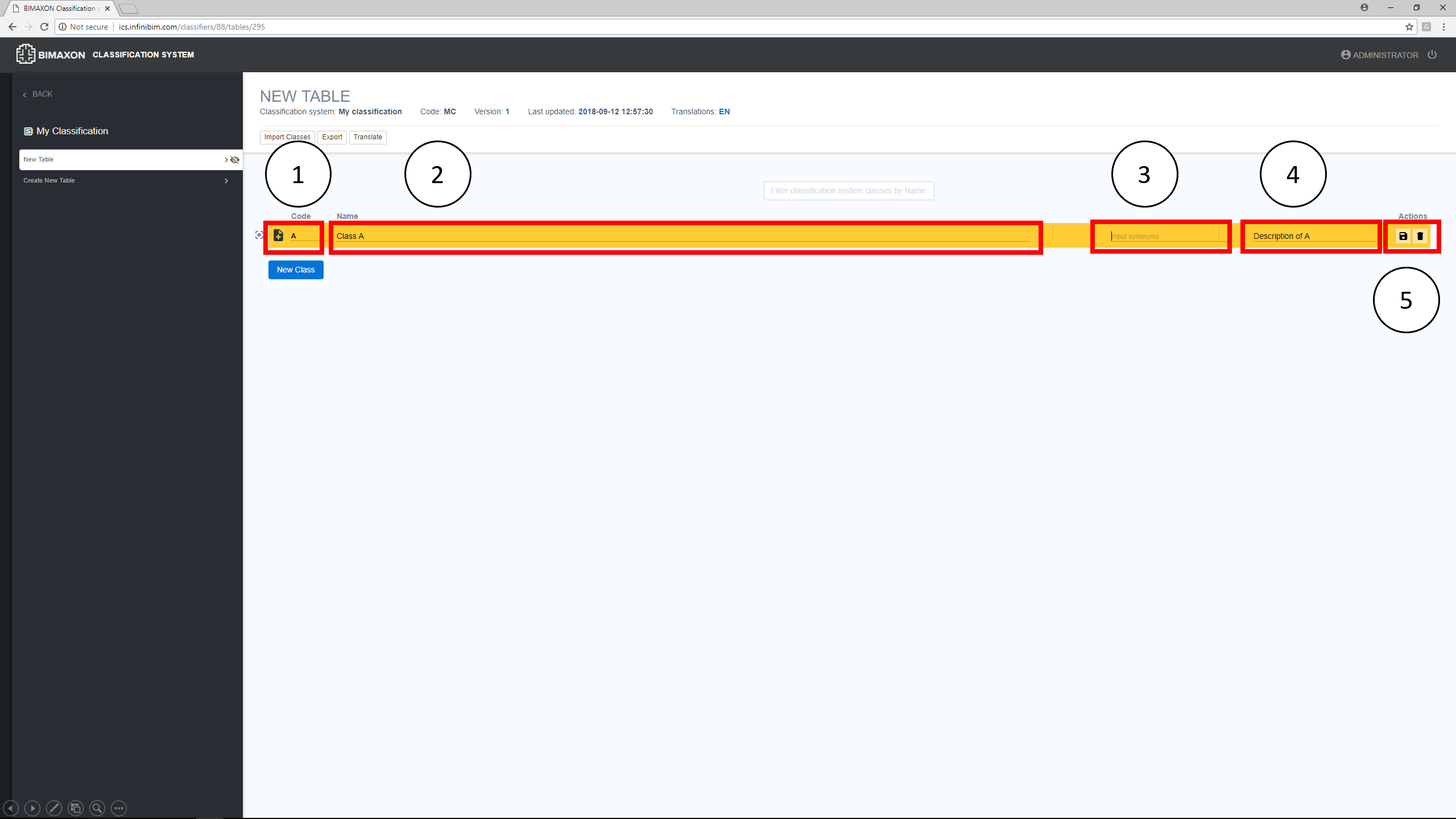
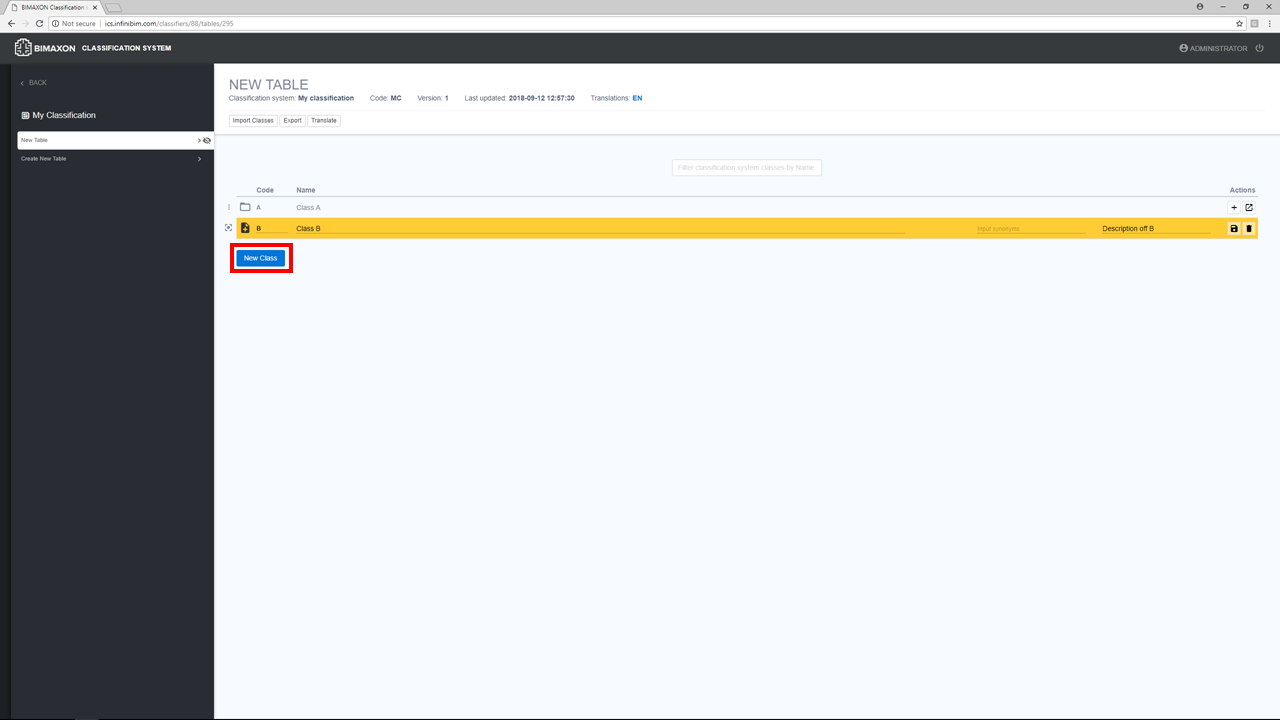
To add more 1st-level classes, click the ![]() button. There is no limit on the number of classes you can add to a table.
button. There is no limit on the number of classes you can add to a table.
To add sub-classes
To add a sub-class, simply click the ![]() icon beside the desired main class.
icon beside the desired main class.
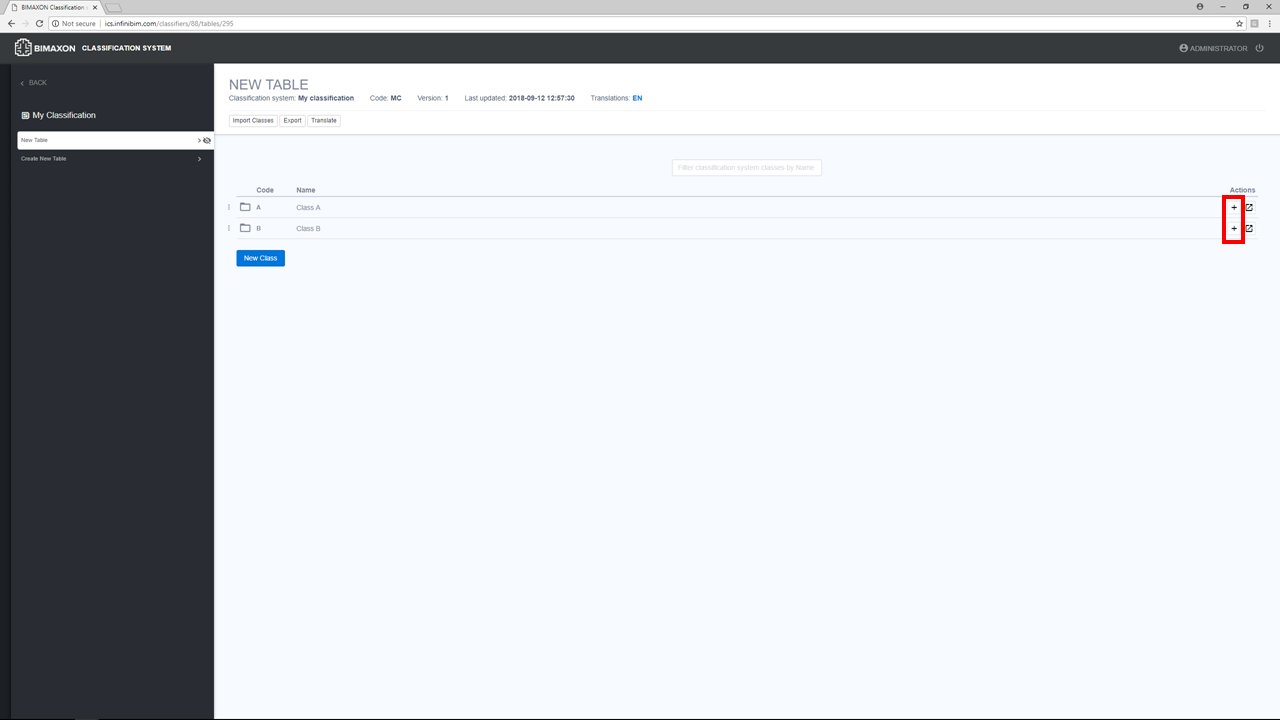
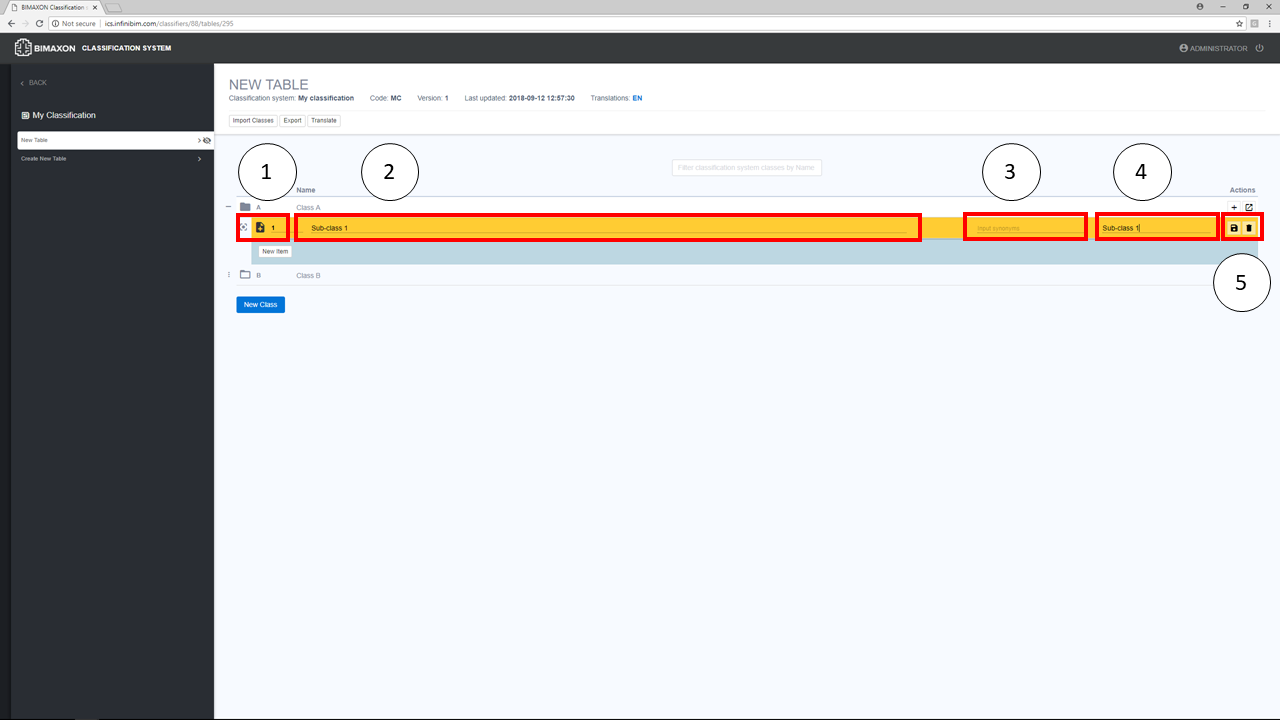
- Now enter an index value for the sub-class
- Enter the name of the sub-class
- Add synonyms (keywords) to aid searching
- Enter a description of the sub-class
- And, finally, save it by clicking on
 .
.
- To add another sub-class on the same level, click
 .
. - To add a sub-sub-class, click the
 button next to the relevant sub-class.
button next to the relevant sub-class.
Then follow the same steps as above to enter an index value, name and description for the newly created item.
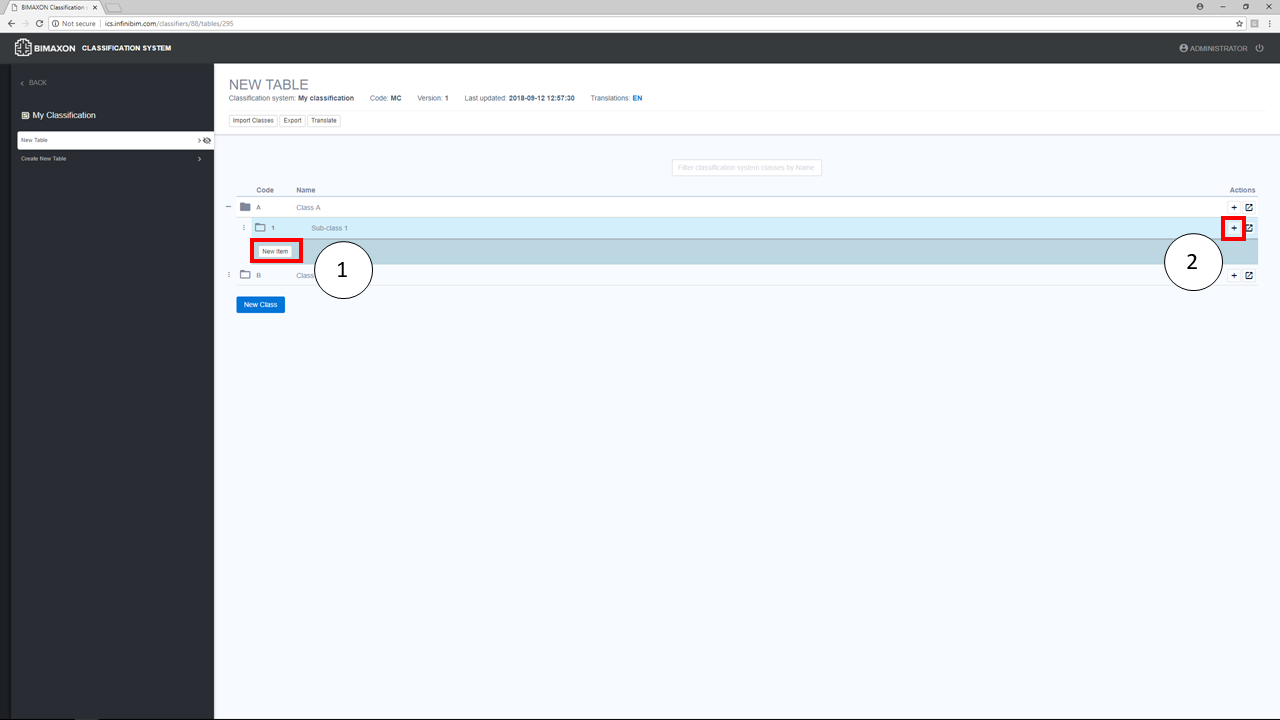
Class indexes and codes
BIMAXON ICS creates the coding for each class index. For each class, two codes are generated. One is the code created by the user. The second is the “full code” – a combination of the codes for the main class and any sub-class(es).
Take an example where a main class “A” has a sub-class “1”, and sub-class “1” has a sub-sub-class “G”. Here the full code of item “G” will be “A1G”. The full code of item “1” will be “A1”. And the full code of item “A” will simply be “A”.

To review and edit classes
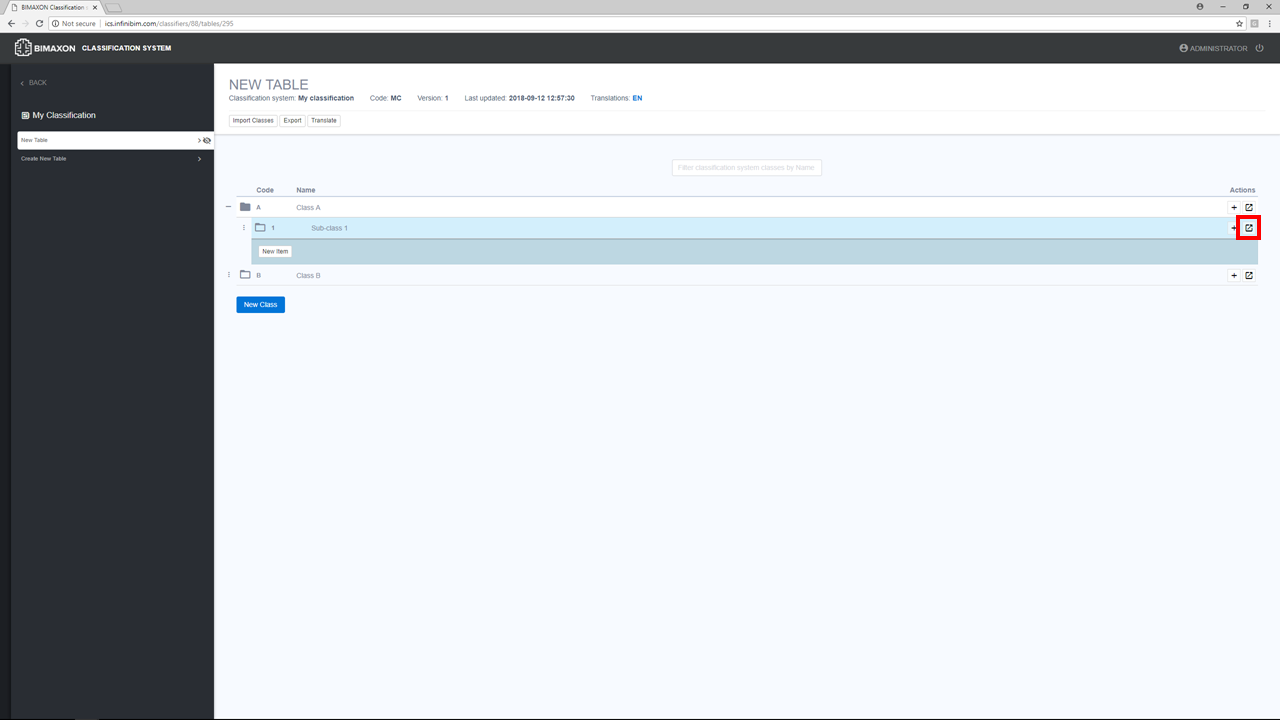
Click the ![]() button next to a class or sub-class to open a preview window with its details.
button next to a class or sub-class to open a preview window with its details.
In that window you can edit the class’s code and full code as well as its title, description and synonyms. To save changes, click the ![]() button.
button.
You can also delete the class or sub-class by clicking the ![]() button and then confirming you choice by by clicking
button and then confirming you choice by by clicking ![]() .
.
![]()
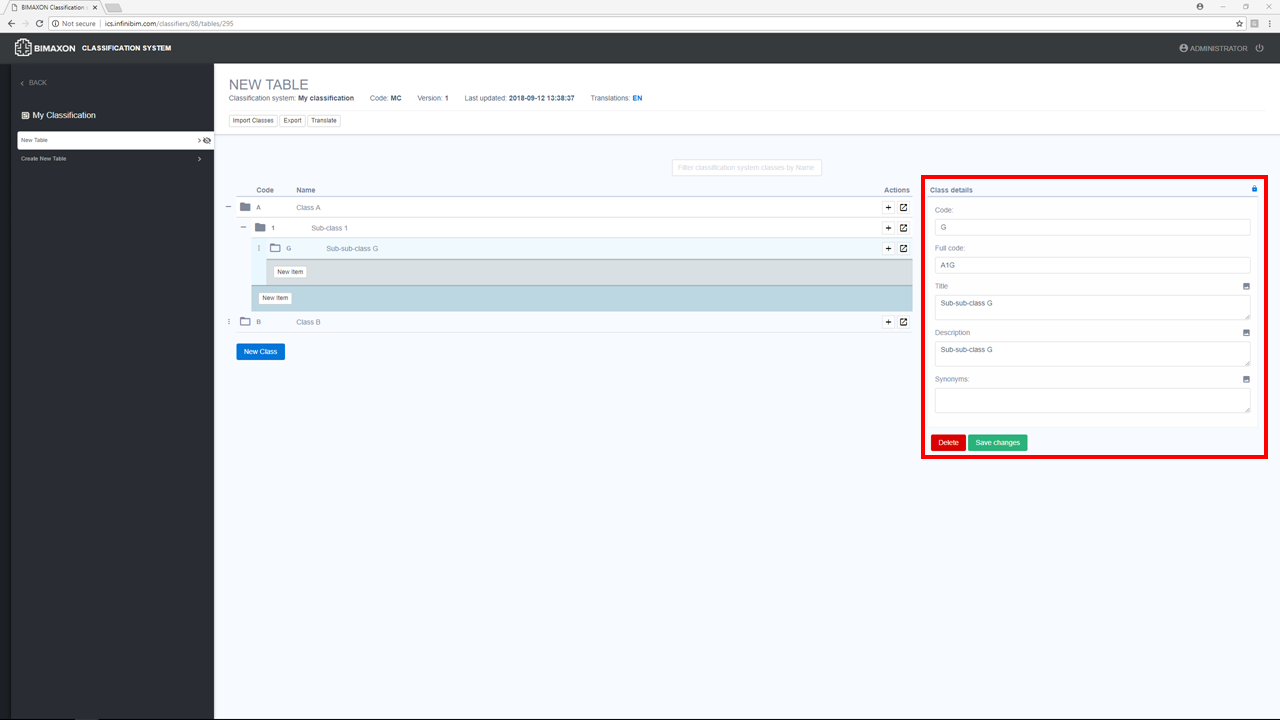
Making new tables visible
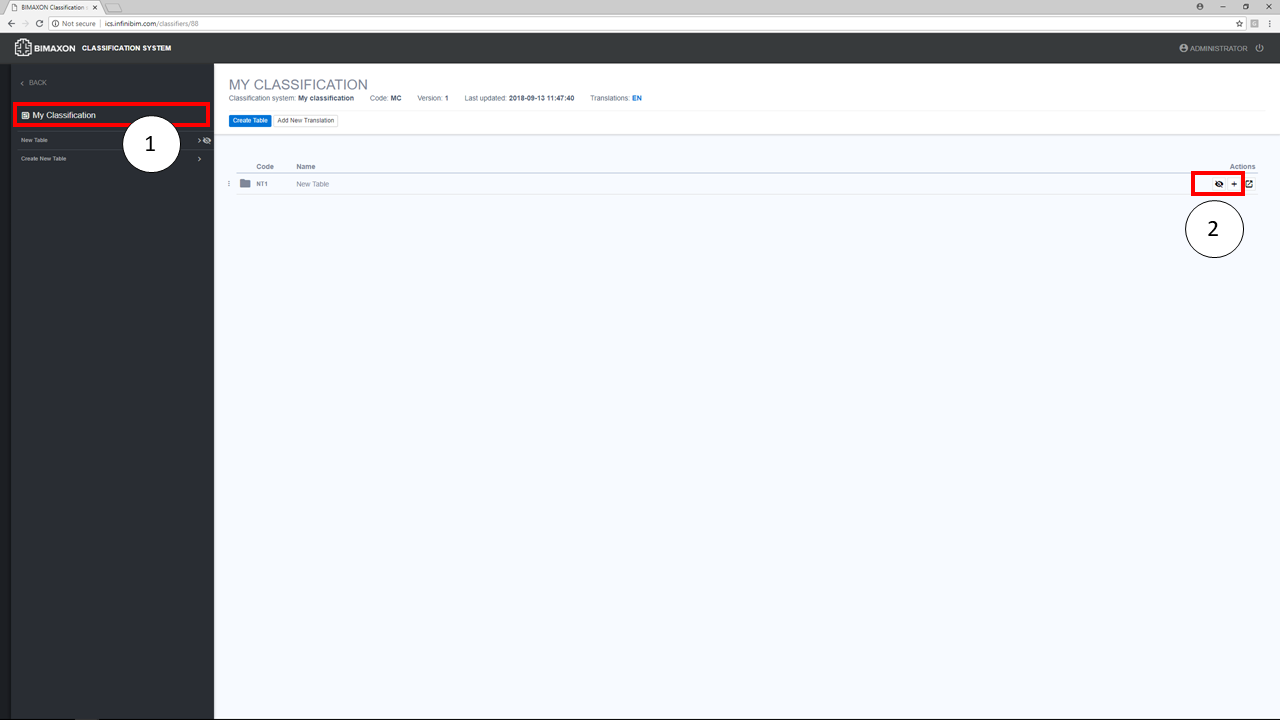
Note that by default, all newly created classification systems and tables are hidden. If you are ready to make a new table public, you need to make it visible to your team.
To do so:
- First, click the name of the classification system in the menu on the left.
- Then locate the relevant table on the list and click the
 icon next to it.
icon next to it.
Similarly, to hide a table that’s currently visible, click on the ![]() icon.
icon.
